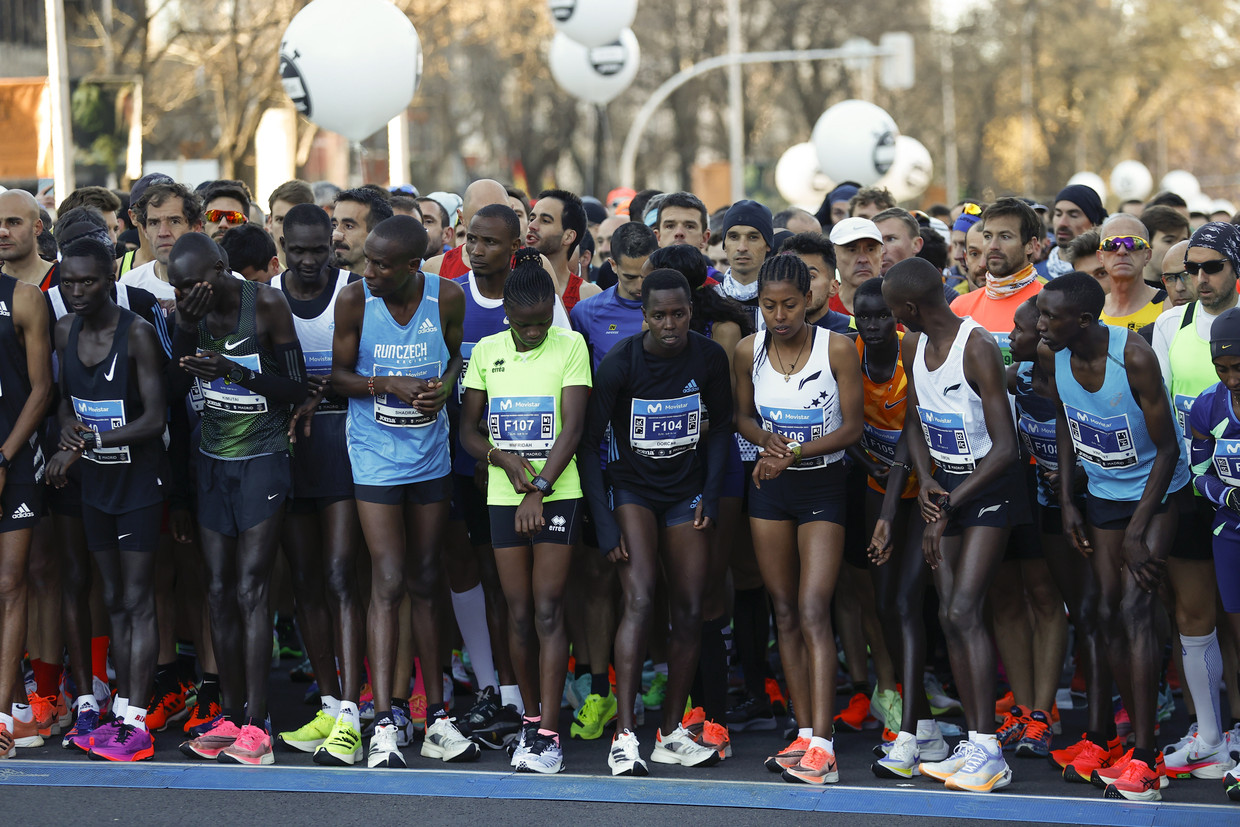A few seconds faster, more fashionable color, lighter grams, better damping, price. That’s what comes to mind when choosing a new pair of running shoes. Logically. The environmental impact of a pair of running shoes can never be great, right? But also sports articles are not made from a sustainability point of view. Manufacturers think mainly in terms of profit not loss and certainly not the loss to the planet.
12.5 billion pairs of running shoes are produced annually, according to a scientific publication from the prestigious Massachusetts Institute of Technology (MIT). Of those, about 500 million are actually sold each year, according to data site Statista. A shoe is often made up of more than 65 different parts, made of 26 materials, and assembled in 360 steps. Pollution on a large scale is inevitable.
greenhouse gases
The total emissions of one pair of new running shoes are around 14kg CO22, which is enough to run a 100-watt bulb for a week. This may sound insignificant, but for a product that doesn’t use energy, that’s an alarming amount, say the MIT researchers. And don’t forget the sheer scale: 12.5 billion pairs of running shoes produced annually also means 12.5 billion pears burned.
Most greenhouse gases are emitted during production, up to 68 percent of the total. This mainly relates to the fossil fuels needed to transport raw materials and electricity to power machinery, often in Chinese factories. Many of these factories run on coal, a fossil fuel, according to MIT research.

The remainder of CO2Emissions mostly come from the plastics the shoe is made of, including polyester and polyurethane; As well as fossil fuels. On average, approximately one-third of the material that enters the plant does not end up in the shoe, but is immediately classified as waste and taken to landfill. Something similar is also the case with every production process. For example, between 50 and 70 percent of the materials needed to produce surfboards do not disappear into the board. So it could be worse.
Then while running. Sometimes slipping, hitting your toe, the sole is wearing. Additionally, the particles end up in nature, averaging around 2 grams per shoe per year. In early 2022, researchers from a South Korean university published a scientific article about its effect. It showed that the molecules can cause abnormalities in zebrafish, a laboratory animal widely used to study health effects in humans due to genetic similarity. Shocking, although the chance of an actual malformation is small.
Shining points, highlights, highlights
As with other sporting goods made from fossil fuels, post-use processing is a particular problem. Glue together 65 different parts of 26 materials and recycling is practically impossible. Estimates in the scientific literature vary, but according to researchers at the Massachusetts Institute of Technology, at least 80 percent of discarded shoes end up in landfill forever. The rest of the running shoes have no better fate: they disappear in incinerators.
There are also bright spots. The environmental impact can be significantly reduced by making running shoes from materials that are reusable, durable and less toxic. For example, by using fewer and lighter materials, emissions could be reduced by 20 percent, MIT scientists calculate. But the main gain is in the factories, using renewable energy sources instead of coal.

Last year, shoe brands Adidas and Allbirds introduced the running shoe with the lowest environmental footprint yet: less than 3 kilograms of CO2.2 by husband. Other brands, including Swiss On and French Salomon, have similar projects. They have to demand, the consumer demands a sustainable alternative.
It’s a start, but manufacturers are far from making it happen. Athletes who run a marathon on a Vaporfly — from Nike, with a carbon-fiber plate — are on average 1 percent faster than the rest, according to recent research published in the scientific journal Scientific Reports† In sports, one percent means the difference between winning and losing, or running a marathon just under or over two hours. Polluting factories will continue to operate until more sustainable footwear can match this level. Until then, green slippers will lose out to fossil slippers. And we walk the world to pieces, and no one notices.
Even if everyone ran in more sustainable shoes from now on, the infrastructure for their collection and recycling would still be lacking. Likewise, your most durable Adidas running shoe will end up in the landfill or in the oven. And if this infrastructure does eventually exist, it is likely that recycling will not yet be possible, because these shoes are also made of many different materials and the technology for properly separating the materials has not yet been widely introduced. For now, reuse remains a promise that cannot be kept. Although these sturdy shoes give us a good feel.

“Total coffee specialist. Hardcore reader. Incurable music scholar. Web guru. Freelance troublemaker. Problem solver. Travel trailblazer.”







More Stories
Bitcoin price rises after new jobs data from US
European stock markets open higher | beursduivel.be
Russia’s oil imports to China decline